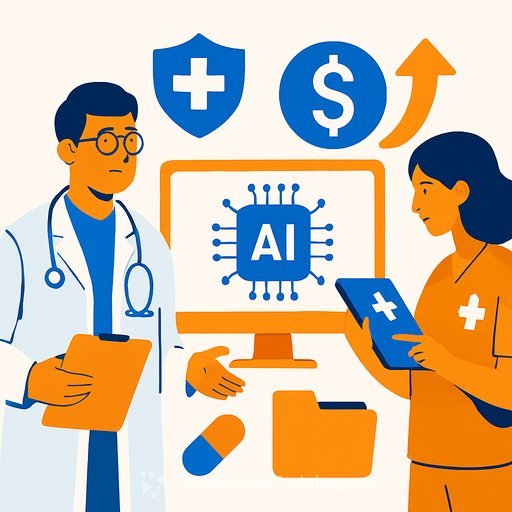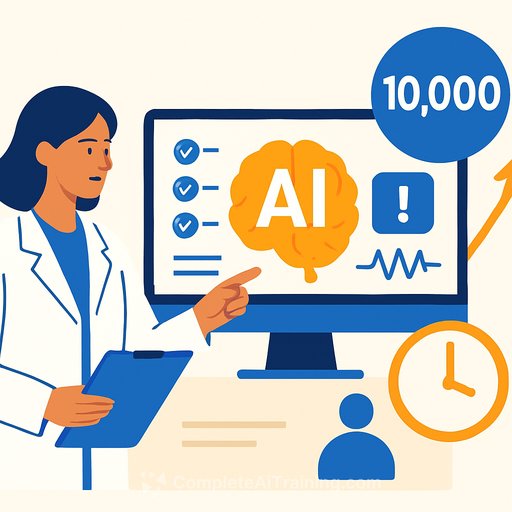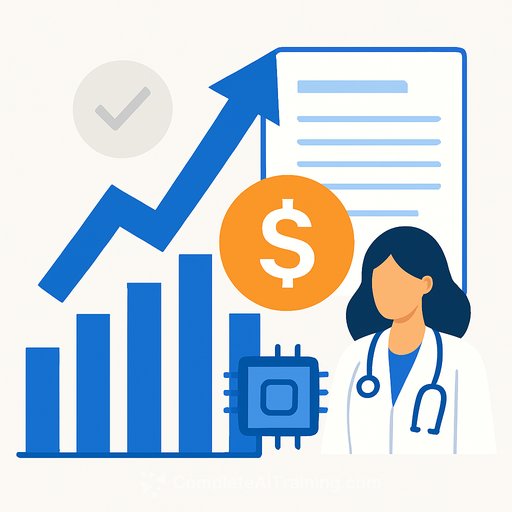Generative AI in Healthcare: 2025 Market Outlook and Go-To-Market Moves for Healthcare Marketers
The generative AI in healthcare market is valued at USD 3.3 billion and is projected to reach USD 39.8 billion by 2035, at a 28% CAGR. Growth is fueled by administrative strain, increased funding, and steady AI/ML improvements that translate into real cost and time savings.
Operational pain points are clear: clinical inefficiencies, rising costs, workforce shortages, and burnout. In Medscape's 2024 Physician Burnout and Depression Report, 49% of physicians reported burnout, driven by administrative burdens (62%) and long hours (41%).
Where the value shows up now
Generative AI targets both clinical and operational outcomes. The upside is tangible:
- Administrative automation can save ~USD 150 billion annually across the sector.
- Studies suggest up to 85% reduction in diagnostic errors.
- 21% reduction in nursing overtime; potential savings of ~USD 469,000 over three years per hospital.
What buyers are prioritizing
- Clinical-based purpose holds the largest current share due to direct impact on patient care and decision support.
- Treatment leads by application and is expected to remain the largest segment.
- Healthcare providers drive the bulk of revenues today and are set to grow faster than other end-users.
What the market is buying
- Technology/platform offerings dominate with close to 75% share of the current market.
- Services are projected to grow at a relatively higher CAGR as deployments scale and customization needs increase.
Market structure and buyer power
- More than 45% of vendors are mid-sized; 79% are headquartered in North America.
- Over 85% offer technology/platforms; 27% serve both healthcare providers and P/B companies.
- Partnership momentum is strong, with ~90% of deals inked in the last two years.
- Buyer bargaining power is very high, so initiatives require careful evaluation of vendor durability, data rights, and roadmap fit.
Segmentation snapshot
- Purpose: Clinical-based; System-based
- Type of offering: Technology/Platform; Service
- Application area: Drug discovery and development; Diagnosis; Treatment; Administrative tasks; Other
- End-user: Pharmaceutical and life science companies; Healthcare providers; Other end-users
- Regions: North America; Europe; Asia-Pacific; Middle East and North Africa; Latin America
Regional outlook
North America currently holds the largest share. Asia-Pacific is expected to grow at a relatively high CAGR through 2035.
Partnerships worth tracking
- NVIDIA × Genentech
- Insilico Medicine × Inimmune
- OpenAI × Moderna
- Amazon Web Services × Pfizer
- Suki × Ascension Saint Thomas
- Abridge × Emory Healthcare
- Google × China Medical University Hospital
Companies to watch
- Amazon Web Services, C3 AI, Exscientia, Google, Huma, IBM, Iktos, LeewayHertz, Medical IP, Microsoft, NVIDIA, OpenAI, Oracle, PhamaX, Syntegra
Why this matters for healthcare marketing leaders
- Lead with outcomes: quantify admin savings, error reduction, and clinical throughput in your messaging and ROI models.
- Segment by buyer reality: provider priorities (care quality, clinician time, throughput) differ from pharma/life sciences (R&D speed, target ID, trial design).
- Positioning matters: if you sell a platform, emphasize integration, data stewardship, and extensibility; if you sell services, lean into speed-to-value and domain expertise.
- Publish proof: case studies tied to treatment impact, documentation automation, and cost avoidance will accelerate buying cycles.
- Partner early: alliances with EHRs, imaging vendors, and cloud providers shorten procurement and integration timelines.
- Address governance up front: be explicit about privacy, security certifications, bias testing, and model transparency to clear compliance hurdles.
90-day action plan
- Map 3-5 high-friction workflows (e.g., prior auth, note summarization, imaging triage) and attach cost/time baselines.
- Build a simple ROI calculator using the savings ranges above to qualify pipeline and prioritize pilots.
- Stand up two proofs of value: one administrative, one clinical-adjacent; define success thresholds pre-deployment.
- Codify data and model governance FAQs to preempt legal and IT security objections.
Risk and compliance guardrails
As adoption scales, strong governance is non-negotiable: data privacy, bias mitigation, and transparency must be embedded in product design and vendor contracts. Align with institutional review, audit requirements, and regional regulations before expansion.
Geographic detail
- North America: US, Canada
- Europe: Germany, UK, France, Spain, Switzerland, The Netherlands, Rest of Europe
- Asia-Pacific: China, Japan, South Korea, Singapore, India, Rest of Asia-Pacific
- Middle East and North Africa: Israel, UAE, Rest of MENA
- Latin America: Brazil, Rest of Latin America
Want the full breakdown?
Access the report: Generative AI in Healthcare Market: Industry Trends and Global Forecasts to 2035.
Reference on physician burnout: Medscape 2024 Physician Burnout and Depression Report.
Upskill your team
If you lead marketing in healthcare and need practical fluency in AI for go-to-market, explore:
Your membership also unlocks:










